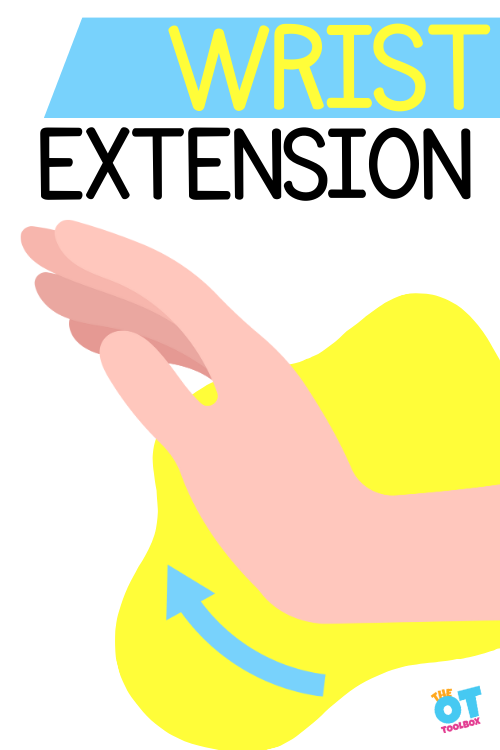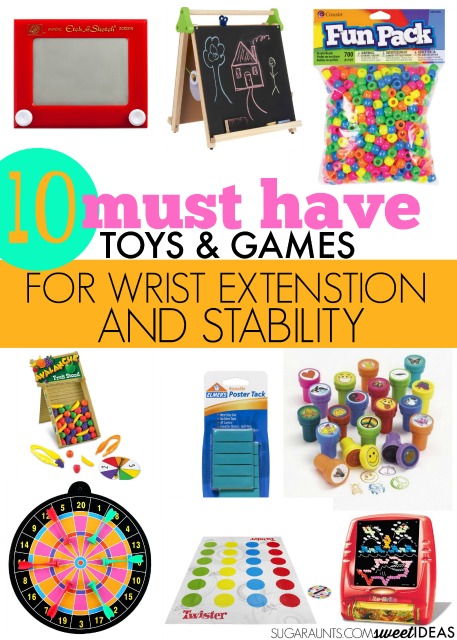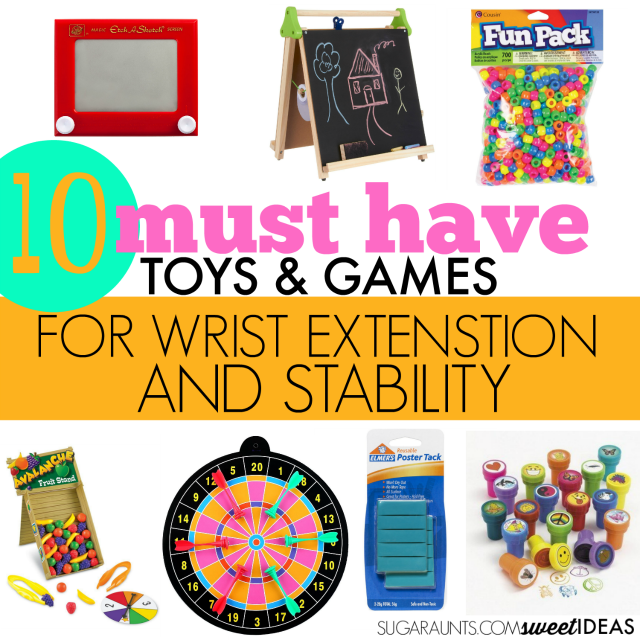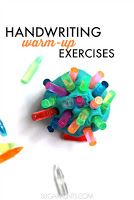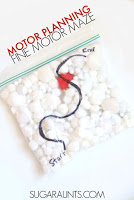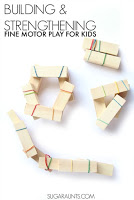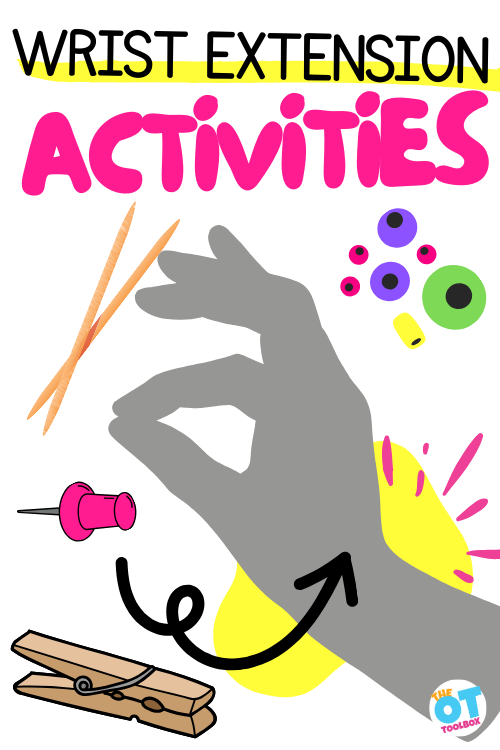This colander and toothpicks activity is a powerful wrist extension fine motor task. You can use this activity idea as range of motion exercises for wrist. You’ve probably seen (or tried) a colander and pipe cleaner activity. We’ve also used pipe cleaners and a cardboard box to achieve the same effect.
Let’s explore what’s happening with this activity…You’ll also want to check out our blog post on finger strength exercises, which includes fun fine motor strengthening activities.
Colander and Toothpicks Activity
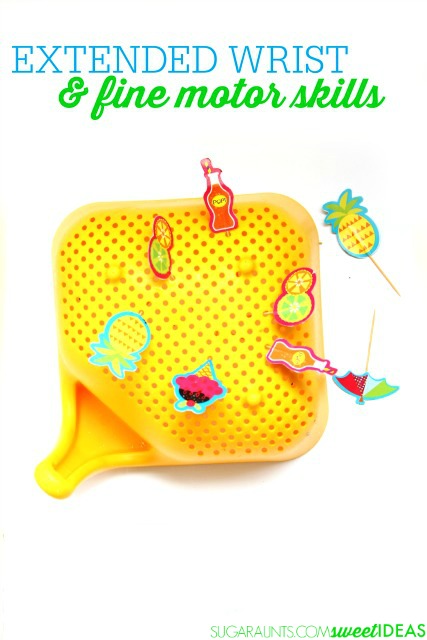
Fine Motor Toothpick Activity
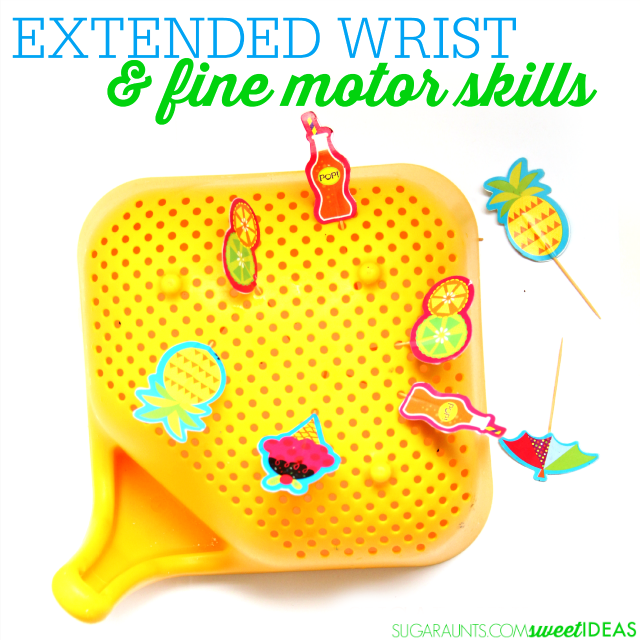
More range of motion exercises for wrist
Looking for more wrist extension activities? Try these:
- Handwriting Warm Up Exercises
- Homemade Lacing Cards
- Motor Planning Fine Motor Maze
- Hand Strengthening Building Activity
Working on fine motor skills, visual perception, visual motor skills, sensory tolerance, handwriting, or scissor skills? Our Fine Motor Kits cover all of these areas and more.
Check out the seasonal Fine Motor Kits that kids love:
















Or, grab one of our themed Fine Motor Kits to target skills with fun themes:
- Frogs Fine Motor Kit
- Unicorns Fine Motor Kit
- Vehicles Fine Motor Kit
- Apple Fine Motor Kit
- Back to School Kit
- Sports Fine Motor Kit
- Outer Space Fine Motor Kit
- Fairytale Fine Motor Kit
- Plus more in our shop!
Want access to all of these kits…and more being added each month? Join The OT Toolbox Member’s Club!
Wrist range of motion
The activities described in this blog post are fun ways to support wrist range of motion through play.
Typical range of motion of the wrist is as follows:
- Wrist Flexion: 0-90 degrees
- Wrist Extension: 0-70 degrees
- Radial Abduction: 0-20 degrees
- Ulnar Abduction: 0-30 degrees
These wrist range of motion degrees are rounded to the nearest numbers and some sources may include slight variances in ROM which is considered the average normal motion.
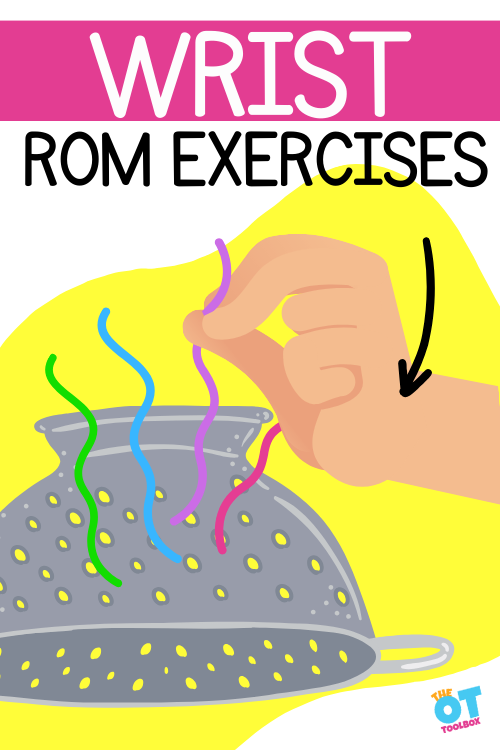

Wrist Range of Motion Exercises
These Range of Motion Exercises for the Wrist are functional but also move the wrist through the full range of motion. We tried to include both strictly ROM exercises for wrist movements, but also functional wrist movements too.
For example, using the colander and toothpick activity (or a colander and pipe cleaner activity), you can set out a certain number of toothpicks or pipe cleaners. Ask the individual to place that number into the holes of the colander while moving the wrist through wrist extension to position the item into the colander holes.
Wrist ROM exercises include these for each motion of the wrist:
- Wrist Flexion- Holding objects and bending the wrist forward are great ROM exercises for wrist flexion.
- Hold your forearm out with your palm facing down.
- Use your opposite hand to gently push your hand and fingers downward. Hold for a few seconds and release.
- Hold a hammer or something heavy and let the weight of the hammer pull the wrist into full flexion.
- Wrist Extension- Wrist extension ROM exercises can include holding objects like a stress ball and pulling the wrist back into an extended position.
- Hold your forearm out with your palm facing up.
- Use your opposite hand to gently push your hand and fingers upward.
- Hold for a few seconds and release.
- Use a hammer to pull the wrist into extension by flipping the forearm over into a supinated position on a table.
- Wrist Supination- Turning the forearm over so the palm is up.
- Extend your arm in front of you with your palm facing down.
- Slowly rotate your wrist to turn your palm upward.
- Hold briefly, then return to the starting position.
- Add repetitions with a hammer. Allow the hammer head to pull the wrist into more supination.
- Wrist Pronation: Turning the wrist toward the midline so the palm is facing down.
- Extend your arm in front of you with your palm facing up.
- Slowly rotate your wrist to turn your palm downward.
- Hold briefly, then return to the starting position.
- Use a hammer with the weight of the hammer head pulling the forearm into pronation.
- Wrist Circles- Gently rotate your wrist in a circular motion, first clockwise and then counterclockwise.
- Start with small circles and gradually increase the size. This exercise improves overall wrist mobility.
- Ulnar Deviation: Turning the wrist toward the midline, moving toward the pinkie side of the hand
- Hold your arm out with your palm facing up.
- Tilt your wrist toward your little finger while keeping your hand and fingers straight.
- Return the middle finger to midline.
- Radial Deviation: Turning the wrist away from midline, moving toward the thumb side of the hand.
- Hold your arm out with your palm facing up.
- Tilt your wrist toward your thumb while keeping your hand and fingers straight.
Specific Wrist Range of Motion Exercises include:
- Picking up small objects and placing them into containers, especially those on an inclined surface
- Using hand gripper workout exercises with a stable wrist positioning.
- Moving through wrist mobility exercises while saying the alphabet or counting
- Using theraputty exercises
- Pushups or wall push ups
- Playing with a ribbon wand or a fairy wand
- Making a letter rainbow exercise
- Tendon glide range of motion exercises
- Using rubber band traction to pull the wrist into full range of motion (PROM)



Colleen Beck, OTR/L has been an occupational therapist since 2000, working in school-based, hand therapy, outpatient peds, EI, and SNF. Colleen created The OT Toolbox to inspire therapists, teachers, and parents with easy and fun tools to help children thrive. Read her story about going from an OT making $3/hour (after paying for kids’ childcare) to a full-time OT resource creator for millions of readers. Want to collaborate? Send an email to contact@theottoolbox.com.


